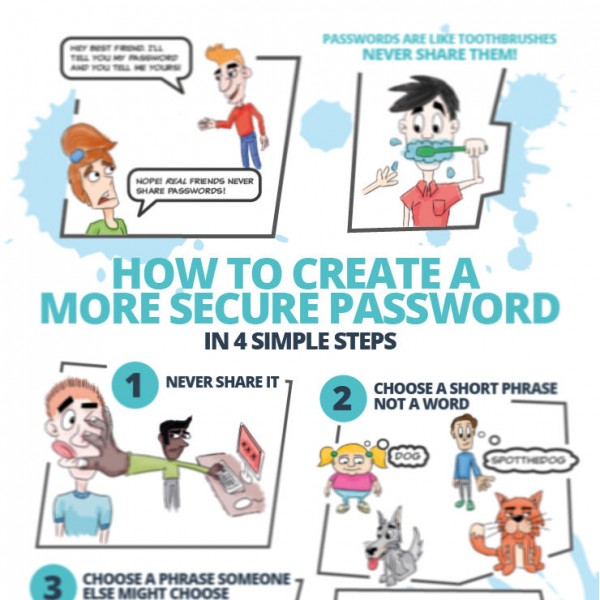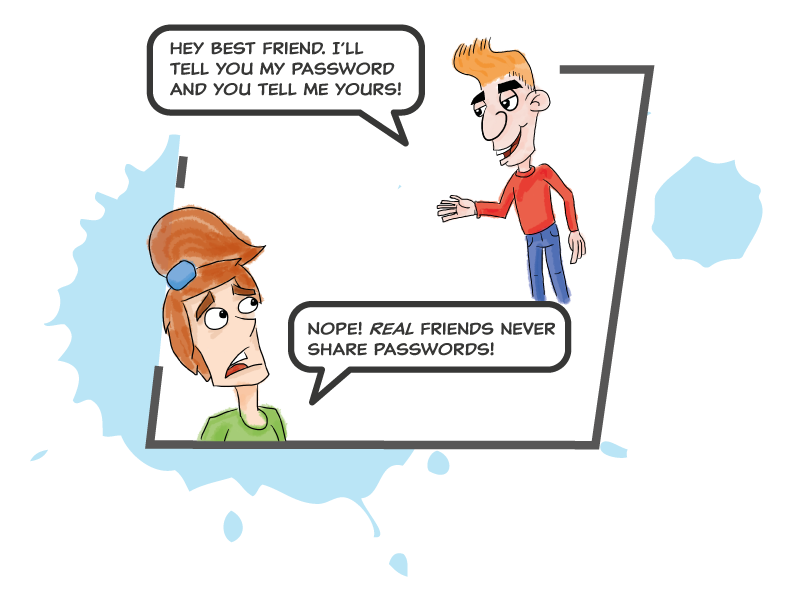
The link between password culture and bullying

There are times when we may feel the world is full of antisocial people who feed upon the hatred and distress they share and cause. As a teacher, with a responsibility for the safeguarding and well being of the children in your care, cyberbullying will almost certainly be, at best, a low level distraction and at worst, lead to self harm, and the involvement of social services and law enforcement.
This resource contains a password security poster for you to print out and Teacher Notes containing tips and advice on cyberbullying and password security.
There isn’t an easy fix. There isn’t a lesson plan that will make children be nice to each other online. It takes time and commitment by the whole school. Ofsted suggest ‘an age related comprehensive esafety curriculum.’ This means digital citizenship requires consistent reinforcement and modelling by adults who work with young people, and their parents and carers.
There is a clear link between password security and culture, and cyberbullying.
There are two aspects to more secure passwords; choosing a password that is less easy to guess and ensuring your password is secret. Teaching young people how to create a more secure password is easy, takes little time and can be a fun activity. Explaining to young people that they must not share their password is more problematic and we need to understand how and why sharing takes place.
FRIENDSHIP
 Real friends share secrets. Friends can be confidants. It is easy to see how young people will share passwords as a trust signifier. ‘You tell me yours and I’ll tell you mine… and we won’t tell those other people in our class.’ We need to impress upon young people (and adults too) that a real friend wouldn’t want to know your password. A real friend would turn away as you enter your log in details – just like the shop assistant does when we pay by card.
Real friends share secrets. Friends can be confidants. It is easy to see how young people will share passwords as a trust signifier. ‘You tell me yours and I’ll tell you mine… and we won’t tell those other people in our class.’ We need to impress upon young people (and adults too) that a real friend wouldn’t want to know your password. A real friend would turn away as you enter your log in details – just like the shop assistant does when we pay by card.
This scenario may help you explain to students why sharing passwords can ruin friendships:
Alex and Sam are best friends.
Messages are sent from Alex’s account which are hurtful about other students.
Alex is challenged and punished by adults and classmates.
Alex denies sending the messages
Adult says; ‘Well if you didn’t send them, who else knows your password?’
Alex realizes the only person he knows definitely knows his password is Sam.
Sam is accused and hurt that his friend would think he’d do such a thing.
Finally after tears and upset it is discovered that another classmate saw Alex type his password and used it later to get Alex into trouble.
SO, THERE ARE THREE THINGS WE MUST TEACH OUR CHILDREN:
DON’T SHARE PASSWORDS WITH OTHER CHILDREN
ALWAYS ENSURE NOBODY CAN SEE YOU ENTER YOUR PASSWORD
USE A PASSWORD WHICH IS HARD TO GUESS OR RECOGNIZE AS IT IS BEING TYPED
Here is an idea that you might use to help teach students how to create an easy to remember, yet complicated, password.
- Don’t use a password, use a pass phrase. A short sentence with the spaces removed.
- Choose a phrase associated with a different person. Perhaps a teacher in the school, an actor or singer. James Bond might choose ‘Ah, Mr Bond’ By removing the spaces the passphrase looks like this: ah,mrbond
- We need to add at least one symbol and one letter. Show children examples of personalized car registrations where numbers are used as letters eg E is replaced by 3.
So we have:
Ah, Mr Bond
ah,mrbond
4hmr&bond
4hmr&bond is easy to remember and hard for somebody to guess.
To practice this you may like to tell the children to look around the class, think about what a classmate likes or does, and then create a passphrase for them. You can share examples and see if the children can guess who the passphrase relates to. Eg Ilov£twi1ght